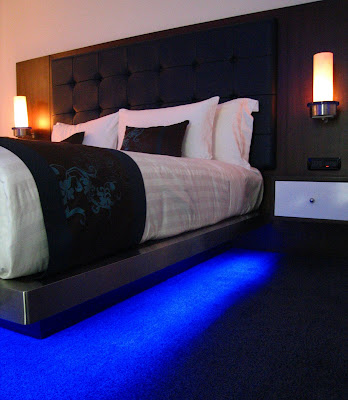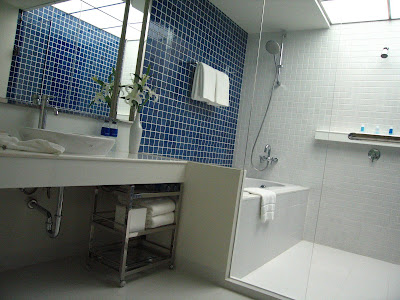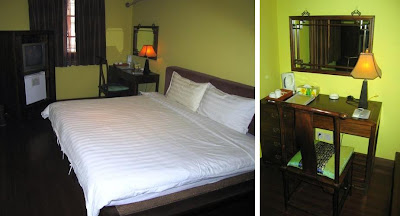

Dream Hotel – Bangkok, Thailand



Dream Hotel – Bangkok, Thailand

D’Lagoon – Perhentian Islands, Malaysia
This experience was memorable for its location. In fact, I can barely even remember what our room’s interior looked like. The guesthouse was in the most idyllic location – on its own turquoise cove housing a coral reef in a quiet part of the beautiful Perhentians. This was a total back-to-nature experience, with nothing around us but lush jungle and rainforest, wildlife (including some scary monitor lizards) and warm, inviting water. Here, we did nothing but snorkel, snorkel, snorkel, and one night watched baby turtles hatch on the beach.
From the ‘we only got to stay there cos it was free’ files – our foray into the uber-chic world of Aman Resorts. Rooms at Amansara (a former royal guesthouse) can cost over US$1,200 a night, and former guests include Brangelina and brood. Our room had a zen-like minimalist style with Asian touches (think chanting monk music and incense), a standalone bathtub, rainforest shower, free mini-bar with full-size bottles, no tv (purposefully) and best of all, our own plunge pool. I did not want to leave – as you can imagine!!! Oh except to visit the restaurant (with its cool round ceiling) to eat gourmet food, sample the wine and cheese on offer, and have afternoon tea with cakes fresh from the oven and design books to browse…

Old House Inn – Shanghai, China
Chilli salt prawns have to be one of my favourite Vietnamese dishes sampled so far. I had this dish for the first time at the excellent Quan An Ngon – a Saigon must-do (a collection of the country’s best street vendors all stationed in one indoor/outdoor restaurant with a colonial building in the centre – it’s amazing).
The above picture was taken at a local seafood restaurant we went to recently called Bon Thien. The prawns were coated in a spicy chilli salt mixture and grilled, which made eating the shell essential to take in the flavour. We also dipped the prawns in a mixture of pepper, salt and lime juice for an even greater flavour boost (not that they needed it!).
Ok, it’s not a 12,000 dong bowl of noodle soup at Tan Dinh market (my local – and yes, that is a bargain!), or any other cheap Vietnamese treat, but a 195,000 dong set menu at French restaurant Ty Coz. Specifically, an authentic and delicious 3-course French meal of substantial serving size for around US$12!
Ty Coz is homely and quaint with a French seaside cottage feel – well, as much as you can imagine in a skinny, multi-storey, concrete Vietnamese building. Tucked down an alley off Pasteur (behind Au Parc Cafe) it’s the kind of place you can have a raucous group dinner with screaming baby in tow and no-one seems to mind (perfect!). The owners are really friendly and happy to explain the specials in both French and English.
The specialty is mussels (moules) and there are lots of flavours to choose from, with variations on the cream and white wine theme plus others like curry or blue cheese. I couldn’t resist the great value set menu and opted for a tuna pancake (galette), followed by mussels with a garlic/white wine/cream sauce and a lemon tart for dessert. The pancake was a thin, wholemeal crepe filled with chunks of tender tuna and vegetables – a healthy, wholesome choice. The mussels were accompanied by a bowl of delicious frites and were beautifully cooked, while the lemon tart was the best I’ve ever eaten – light, fresh and equally sweet and sour.
For real, hearty French cuisine, value for money, great service and an unpretentious, fun atmosphere, Ty Coz is the perfect dinner destination.
Ty Coz, 178/4 Pasteur Street, D1, Saigon
For those with a sweet tooth, Vietnam offers much temptation with its myriad baked goods – cakes, donuts, breads, tarts, croissants, baguettes, mousses and more are readily available. There’s no doubt the French influenced this trend, though Vietnamese people have an obvious penchant for sugar – you should see how much condensed milk goes into a local-style coffee!